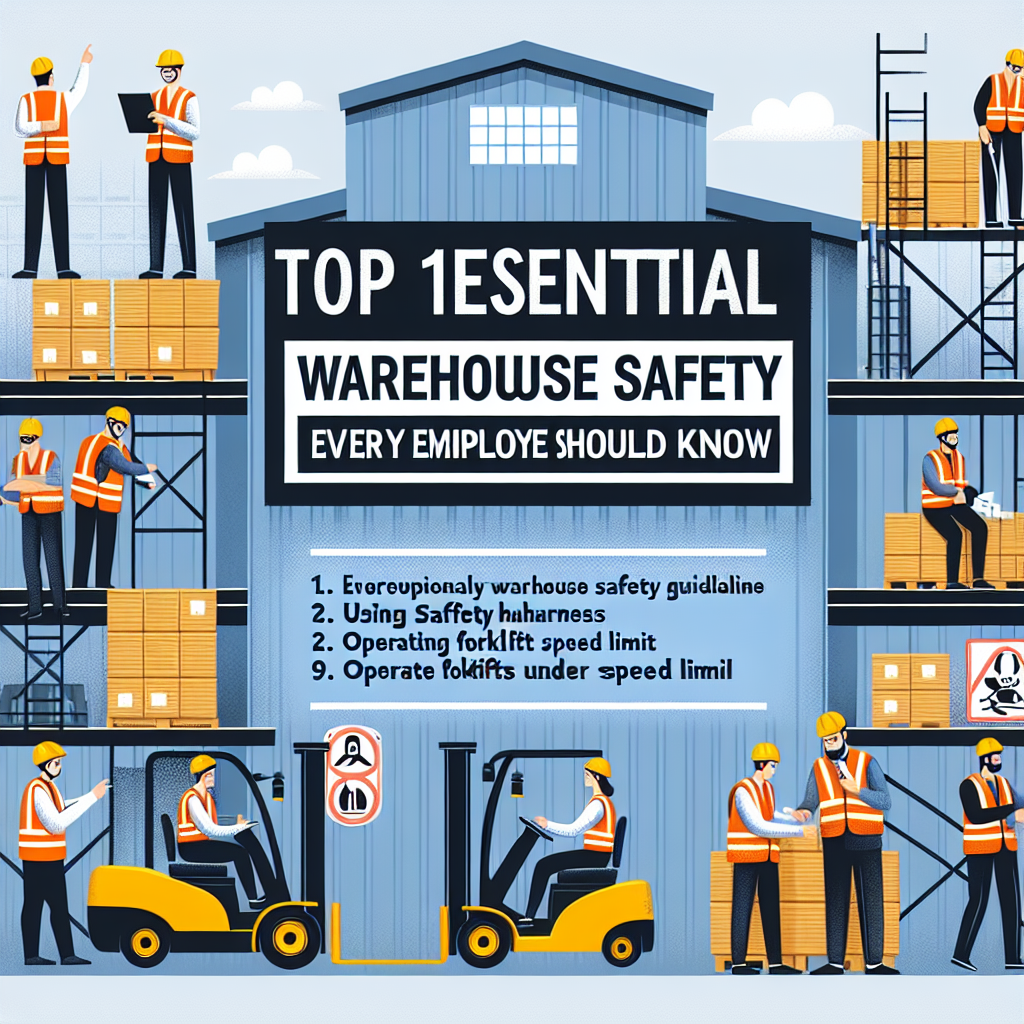In the bustling world of warehousing, safety is paramount. Working in warehouses can be rewarding, but it’s also a realm filled with potential hazards. Understanding and practicing safety guidelines is essential not just for compliance but for the well-being of all employees. Here are the top 10 essential warehouse safety guidelines every employee should know.
1. Prioritize Personal Protective Equipment (PPE)
The first line of defense in warehouse safety is Personal Protective Equipment (PPE). Always wear the appropriate gear, including sturdy boots, gloves, safety goggles, and hard hats. This equipment is designed to protect you from various hazards, so never skip this crucial step. Encounters with heavy machinery or sharp objects make PPE non-negotiable.
Why is PPE Important?
PPE serves as the barrier between you and potential injuries. Not only can it mitigate the chances of accidents, but wearing it also sets a responsible example for other staff members.
2. Maintain Clear Aisles and Workspaces
Cluttered aisles and workspaces can lead to slips, trips, and falls. Always ensure that walkways and emergency exits are free from obstructions. Encourage a culture where everyone is responsible for keeping their work area tidy.
Tips for Managing Clutter
Set aside a few minutes at the end of each shift to tidy up your workspace. Simple acts like removing empty boxes or organizing tools can make a significant difference.
3. Practice Safe Lifting Techniques
Heavy lifting is an everyday reality in warehouses. To avoid back injuries, always lift with your legs, not your back. Get assistance for heavier items, and use equipment like dollies or forklifts when needed.
How to Lift Safely
- Stand close to the item you’re lifting.
- Bend at your knees, keeping your back straight.
- Use your legs to power the lift.
Following these steps can greatly reduce the risk of injury.
4. Know Emergency Procedures
Every warehouse should have emergency procedures in place. Familiarize yourself with fire exits, alarms, and the locations of first aid kits. Participate in regular safety drills to keep this information fresh in your mind.
Why Emergency Procedures Matter
Knowing what to do in an emergency can save lives. A calm and prepared employee is invaluable in stressful situations.
5. Operate Machinery with Caution
Heavy machinery such as forklifts and pallet jacks can be dangerous. Only operate machinery after receiving proper training. Always conduct a pre-operation inspection to ensure equipment is in good working condition.
Recommended Machinery Safety Practices
- Never exceed the weight limits.
- Stay alert while operating and maintain a safe distance from others.
Safety training programs should be a priority for any warehouse environment.
6. Avoid Distractions
In a fast-paced warehouse environment, distractions can lead to accidents. Keep your phone and other distractions away during work hours. If you need to take a call or check your messages, step away from your work area.
Staying Focused
Encourage a no-distraction policy among teams. A focused work environment promotes safety and efficiency.
7. Use Ladders and Scaffolding Safely
When it comes to heights, safety cannot be emphasized enough. Always inspect ladders and scaffolding for stability before use. Make sure to follow proper ladder protocol and never exceed the maximum load.
Ladder Safety Tips
- Maintain three points of contact when climbing.
- Avoid using ladders in high-traffic areas.
These simple practices can prevent many falls and injuries.
8. Report Unsafe Conditions Immediately
If you notice unsafe conditions, do not keep it to yourself. Report issues to a supervisor so they can be addressed. Whether it’s a spilled liquid or a piece of malfunctioning equipment, reporting can prevent accidents.
Building a Safety Culture
Encourage open communication about safety concerns. When employees feel empowered to report issues, they contribute to a safer environment for all.
9. Understand Proper Chemical Handling
Many warehouses store chemicals that can be hazardous. Familiarize yourself with Material Safety Data Sheets (MSDS) and ensure you’re aware of the proper handling and storage techniques for these substances.
Safety Precautions when Handling Chemicals
- Always use appropriate PPE.
- Never mix different chemicals unless you’re absolutely sure it’s safe.
Proper training on chemical handling is critical for minimizing risks.
10. Embrace Continuous Education and Training
Warehouse safety is an ongoing learning process. Regular safety training sessions and workshops keep the importance of safety at the forefront. Engaging in continuous education helps everyone stay updated on best practices and new safety standards.
Why Training is Essential
Fostering a culture of learning not only enhances safety but also improves morale. Employees who feel equipped with knowledge are more empowered and confident in their roles.
Conclusion: Safety is a Shared Responsibility
The importance of warehouse safety cannot be overstated. By following these top 10 essential guidelines, every employee contributes to a safer work environment. Remember, safety is not just the responsibility of management; it’s a collective effort. Commit to these practices, encourage your peers, and make safety a priority in your daily operations. Stay safe, and let’s keep our workplace hazard-free together!


